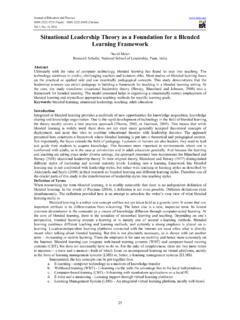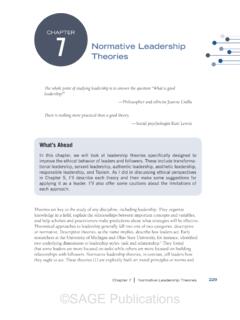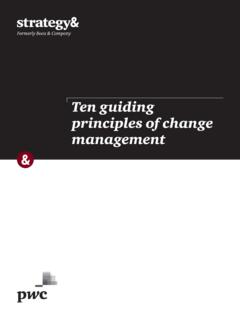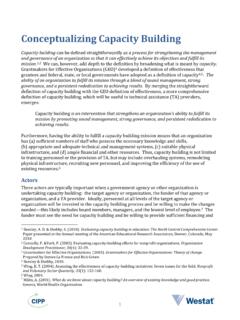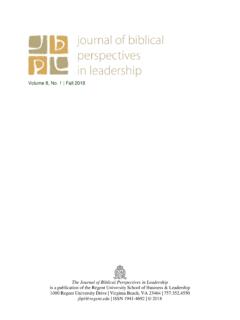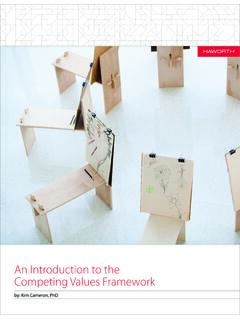Transcription of Bakhtin’s Theory of Dialogue: A Construct for Pedagogy ...
1 Bakhtin's Theory of Dialogue: A Construct for Pedagogy , Methodology and Analysis Julie Hamston University of Melbourne Abstract This article describes the application of Bakhtin's (1981, 1986a,b) theorisation of language as dialogue to the study of young students' struggle with discourses of ethnicity within the context of a Studies of Asia curriculum project (Hamston 2003). Bakhtin's rich conceptualisation of the productive and ethical nature of dialogue has operated at all levels in this study as a theoretical, pedagogical, methodological and analytic research Construct . It is hoped that the description of the research provided here contributes to the field of discourse-based research in several key ways. First and foremost, the model of dialogic Pedagogy central to the research was informed by Bakhtin's (1981, 1986a,b) belief in the moral responsibility of language and thus resonated with the need in complex and changing global and local conditions for education as good work' (Carlson 1997a,b, 2002, Gardner et al.)
2 1999, Luke & Carpenter 2003, Willinsky, 1998). As researcher/teacher in this study, I situated at the centre of the research the kinds of questions that relate to what Weis and Fine (2003) define as issues of power, privilege, standpoint, knowledge and difference. Secondly, the dialogic nature of the data collected over time allowed for a nuanced and complex portrait of the key research participants' ideological becoming' (Bakhtin 1981) and brought to the fore the different social voices' that they chose to speak through. Finally, the location of discourses in the students' spoken and embodied language through a fine-grained linguistic analysis resonated with Bakhtin's (1986a) call for a profound understanding of language. Introduction The study outlined here took place with 26 students in one Year 5 classroom at Parkview Grammar a private Anglican girls' school in Melbourne. The students The Australian Educational Researcher, Volume 33, Number 1, April 2006 55.
3 JULIE HAMSTON. participated in a ten-week Studies of Asia curriculum project that exposed them to multiple representations of colonial Australia; to competing discourses of Australia', Asia' and the Asian presence' in Australia; and to enduring practices of racial superiority in Australia (see Singh 1995a). Studies of Asia is a field of curriculum studies designed to develop students' understanding of the peoples and cultures of Asia, the significance of Asia-Australia relations, and the contributions of Asian peoples to Australian culture and As a national curriculum initiative, Studies of Asia has aimed to problematise both Australia's colonial past and its recent history as a nation-state in the Asian region and has encouraged the development of a language with which to counter Orientalist perspectives on Asia' and Australia'. (Singh 1995a, after Said 1995). The framing of Studies of Asia as a postcolonial project (Singh 1995a,b) is similar to the postcolonial Pedagogy advocated by Carlson (1997a,b) in the United States and Willinsky (1998) in Canada.
4 Studies of Asia curriculum has presented Australian educators and students with an important context within which to examine the anti-Asia legacy of colonial Australia and to develop a language constitutive of the new ethnicities that characterise Australia as a postcolonial nation state. This process of re-imagining' Australia, however, is not new. Australian education has long developed rich and productive multicultural curriculum that has advocated inclusiveness and the valuing of cultural diversity [for example, Kalantzis et al. 1990]. However, in recent decades, governments and educators have aimed to redress the relative absence of an Asian perspective in the curriculum as a means of acknowledging the significant role that Asia has and will play in Australia's past, present and future (Asia Education Foundation 1999, FitzGerald 1990, 1994, Keating 2000, Rizvi 1996, Singh 1995a, Williamson-Fien 1994). Such an education initiative in the context of Australia's geo-political history is significant.
5 In the past, language in Australia was used to Construct powerful, authoritative (see Bakhtin 1981, 1986a) discourses of nation' and race' (see Bhabha 1994, Hall 1996a, Hall, Held & McGrew 1992, Said 1995). This essentialising language conflated whiteness' with Australianness' (Broinowski 1992, 2003). Practices of racism and exclusion in Australia arose from this view of racial superiority, and peoples from the Asian region were constructed as irrevocably different and essentially unequal (Broinowski 1992). Australia was thus imagined' (Bourdieu 1997, p. 221) through the hegemonic, linguistic construction of deficit and division. The use of language in postcolonial times, however, is complex, in that a more inclusive and creative use of language is required to describe the cultural hybridity of nation states such Australia, and to answer deceptively simple questions such as: Who is an Australian? This move towards a more comprehensive naming of Australian 56.
6 BAKHTIN'S Theory OF DIALOGUE. identity is reflective of the struggle that ensues between authoritative discourses and other discourses that might be more persuasive to an individual (Bakhtin 1981). The contest for language has been evident on one hand in the establishment of anti- discrimination and multicultural policies that have offered alternative official'. discourses of culture and ethnicity to those of White Australia' that circulated within Australian society in the nineteenth and twentieth centuries (see Keating 2000). Yet, the global rise in fundamentalism, xenophobia and new racisms' that mark out current times (Bauman 1998, Castles 1996) and the threads of discourses from the past that remain in the present (Bakhtin 1981) complicate this dialogic process even further. The language of the One Nation Party in Australia in the mid 1990s, for example, focused attention once more on essentialist categories of nation' and race'. as a means of defining Australian identity and highlighted the discursive legacy of White Australia' (Ang 2002, Singh 2002).
7 Through this language, Asian-Australians were (re) constructed as a threat, and Indigenous Australians were portrayed as undeserving of special treatment and compensation for the inequities of the past. The policies and language of the current conservative Coalition government in Australia have been seen to contribute to these perceptions (Broinowski 2003). Under the leadership of Prime Minister John Howard, language used in respect to Australia's history and its cultural values appears to have been rearticulated to Britain and the United States and disassociated from Asia (Broinowski 2003). Furthermore, and significantly, the language of multiculturalism and indigenous rights in Australia has been effectively silenced by the discursive authority of this government (see Lo Bianco 2004). Classrooms are intertextual sites where such discourses from outside and from other times and places meet and clash' (Bakhtin 1981) with those discourses embodied in curriculum projects such as Studies of Asia.
8 According to Bakhtin (1981, 1986a), discourses as social viewpoints, or voices,' circulate across time and space, some of which become internalised in an individual's consciousness. The multiplicity of social voices heteroglossia arises because different discourses are available for an individual to appropriate, to internalise, and to speak through and, thus, permeate the language exchanged between individuals when they engage in dialogue. Discursive tensions arise because of the different social voices that individuals appropriate. Nevertheless, discourse-change is a possible outcome of this tension because dialogue is a process of building and consciousness-raising that increases the individual's awareness of the varied discourses available in society and, ultimately through self-reflection, the discourses she chooses to speak through. To Bakhtin, such a conceptualisation of dialogue acknowledges the mutuality of the individual and society; the language an individual speaks, and larger social discourses; and the ongoing dialogic process and discourse-change.
9 Language as 57. JULIE HAMSTON. dialogue therefore encourages an ethical agency which foregrounds the linguistic basis of becoming' and of discursive change. This ongoing process of struggle and building is central to the contest for language in Australia: the contested views of Australianness'; the racial, cultural and linguistic dominance of White Australia' (Ang 2002, Singh 2002); the rise of ultra-conservatism; and the rich potential of Australia's future as a culturally pluralist postcolonial nation-state (Crowley 1998, Lo Bianco, Liddicoat & Crozet 1999). The role of the educator, I argue, is to bring to the fore different discourses and to make transparent the potentially enabling and limiting effects of these discourses. In this way young students are afforded opportunities to examine and critique hegemonic versions of nation', and race' that reside in the collective memory'. (Bakhtin 1981). To complement this critique, students participate in the productive process of learning to value what Hall (1992) describes as the New Ethnicities that characterise postcolonial times.
10 They learn that everyone is ethnically located; that everyone comes from some place; that everyone has a particular history, a particular experience, increasingly marked by hybridity and complexity (Hall 1992). In so doing, they learn that cultural difference is dialogic, interconnected and complex (Denzin 2003, after Hall 1996). More importantly, through participation in dialogue, students develop an awareness of the intricate relationship between the words they speak, the words they internalise as inner dialogue' and the words they hear from others a tripartite relationship that Bakhtin (1981) refers to as Addressivity. Classrooms are therefore potential sites for the cultural change that resides within language. This perspective on language as a cultural tool and the belief in the power of dialogue to assist individuals to become' and grow as ethical human beings and ultimately to effect discourse-change (Bakhtin 1981, Gurevitch 2000, Nealon 1997, Wertsch 1998), framed the curriculum project at the centre of the study highlighted here.










